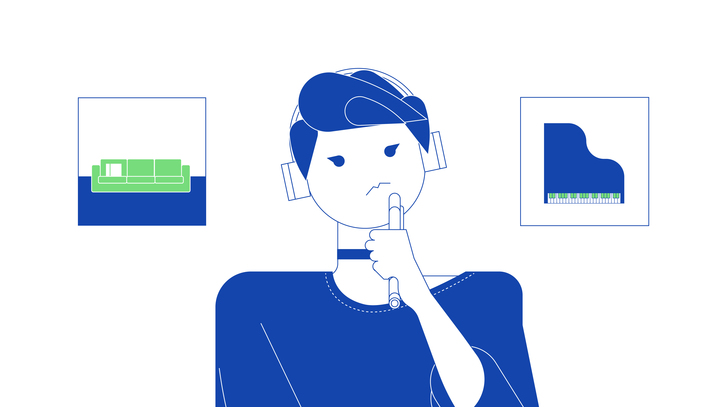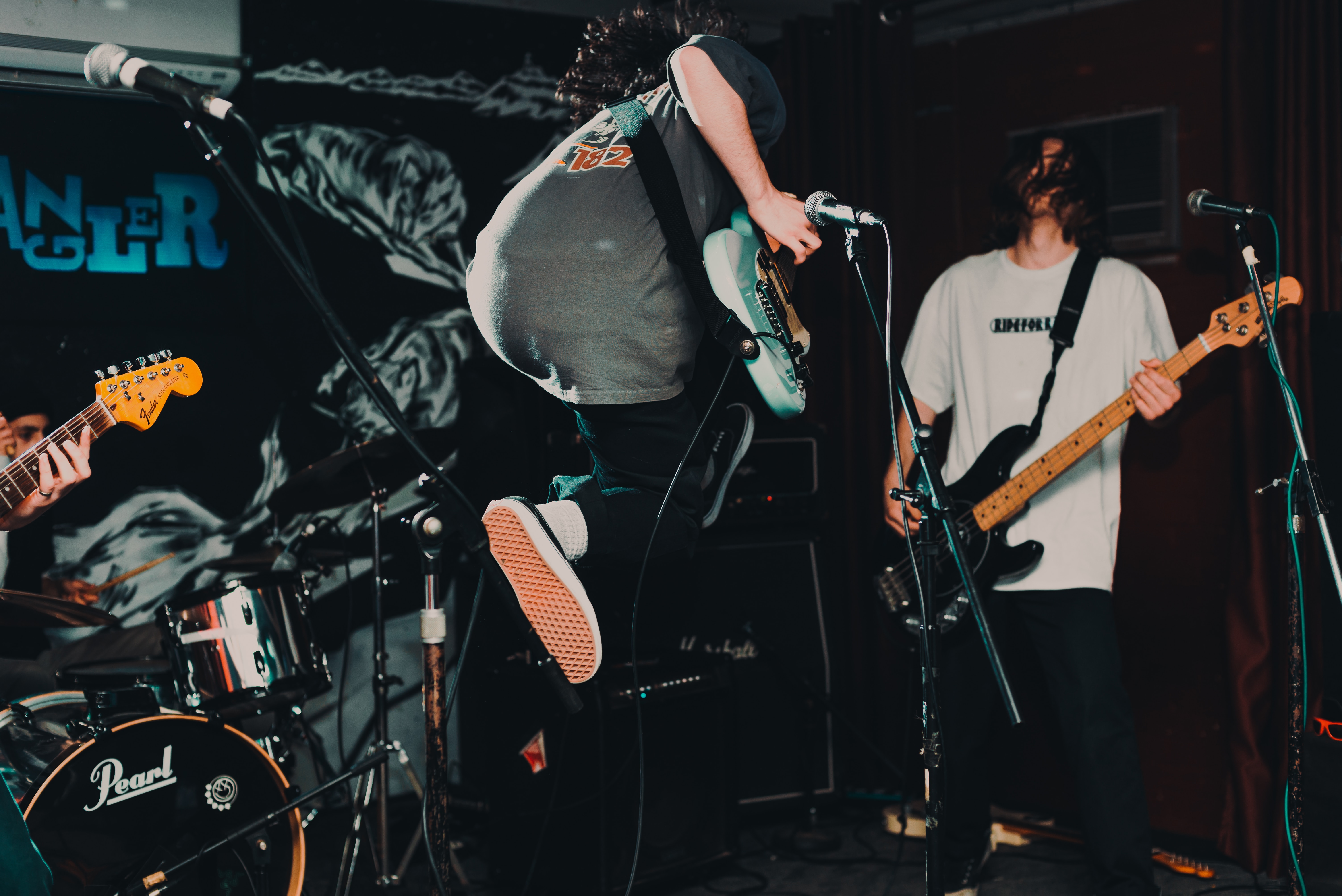Musicians and NFTs | The independent artist’s guide to blockchain technology
If you’re a musician looking for new ways to connect with fans and monetise your music, NFTs could be the answer. This guide to NFTs and the blockchain explains why.
Independent musicians are always on the lookout for new ways to connect with their audience and diversify revenue streams. Musicians and NFTs have been brought together, enabling more artists to achieve just that.
In this article, we’ll break down what NFTs are, how they work, and why they could be a game-changer for independent musicians.
Read through all the information in this guide, or skip to sections you’re most interested in using the buttons below!
- An introduction to NFTs & the blockchain
- Musicians and NFTs | Why Should You Care?
- Cool ways Musicians & NFTs can work together
- How to create your own NFTs
- Wrapping up
An introduction to NFTs & the blockchain
When it comes to non-fungible tokens, there’s a fair amount to know about. You can scratch the surface and get a pretty decent but broad understanding. Or, you can dive in deep, and untangle some complex and technical information.
In this blog, we’ll be aiming for something closer to the former, with a sprinkling of extra detail to really illustrate each point. Let’s get started…

What are NFTs?
First things first, what exactly are NFTs?
NFT stands for “non-fungible token”. At their simplest, they are digital tokens made up of a string of code that exists on the blockchain (we’ll get to what the blockchain is shortly). These tokens represent ownership of a unique item or piece of content that is attached to the NFT. Pretty much any asset can be represented by an NFT, from digital to physical. Examples include images, videos, a piece of music, even an actual house.
Unlike cryptocurrencies, NFTs can’t simply be exchanged. That’s what the “non-fungible” bit refers to, in case you were wondering. To make it clearer, regular money like US dollars (also called fiat money), is fungible. If you swapped a dollar with your friend, you’d both end up with the same thing you started with. This isn’t true for NFTs. Each one is unique, even if the asset attached appears to be identical.
Stick with us, here.
Last year, Muse released an album which was also available to purchase as an NFT. Multiple NFTs were available, and the album attached to each one was identical. However, each NFT is still unique, thanks to those blocks of code that are fundamentally what NFTs are.
So you can fully understand these mysterious blocks of code, we will go on to briefly explain the blockchain. You don’t actually need a deep understanding of this in order to get into NFTs. But, knowledge is power, and it may help you understand what an NFT is a bit better!
How do NFTs work?
NFTs are created using blockchain technology, which is a decentralized digital ledger that records ownership and transactions (more on that later, we promise).
When an artist creates an NFT, they are creating a one-of-a-kind digital asset that represents something unique, like a piece of artwork or a song. This digital asset is then verified and recorded on the blockchain, which acts as a digital ledger that tracks ownership and transactions.
Once the NFT is created and verified, it can be sold to someone else. The buyer of the NFT becomes the owner of that unique digital asset, which they can then hold onto or sell to someone else in the future.
The value of an NFT is based on a number of factors. The popularity of the artist or creator of the NFT largely determines its value. Another significant contributing factor is the rarity and scarcity of an NFT. You can think of it like limited edition vinyls, or original pressings. The harder an NFT is to come by, the higher the price tag is likely to be.
What is the blockchain & how does it work?
Blockchain technology is a type of database that is decentralized, meaning that there is no central authority controlling it. Instead, the database is spread out across a network of computers, called nodes, that all work together to keep the database secure and up-to-date.
Every time a new piece of information, called a block, is added to the blockchain, it is verified by the network of nodes. Once it is verified, it cannot be changed or deleted, making the blockchain very secure and tamper-proof.
There is more than one blockchain, despite it being referred to as “the” blockchain. Popular and well-known networks include Ethereum, Solana, and PolkaDot. Blocks (those chunks of code we mentioned earlier) represent transactions, which most commonly involve cryptocurrency or NFTs.
So, where does all this fit in with musicians and NFTs? Well, blockchain technology enables artists to sell their music directly to fans without any middlemen, and the transactions are recorded on the blockchain for everyone to see. This creates a more transparent system where artists can see exactly how much money they are making and where it is coming from. It also creates a more direct relationship between artists and their fans, as fans can support their favourite artists by buying their music directly from them.
All of this, and so much more, can be done by making use of NFTs.
NFTs & the environment
When NFTs originally came about, there were concerns about the environmental impact, particularly around the energy usage required for the blockchain networks that support them. This has led to criticism from some quarters. Many people were left questioning the sustainability of NFTs and their impact on the environment.
But there is good news for musicians who are interested in exploring the potential of NFTs. The environmental impact of NFTs has been vastly improved by the emergence of Proof of Stake (PoS) verification and network merges.
Proof of Stake is an alternative to the traditional Proof of Work (PoW) consensus mechanism.
A consenus mechanism is the protocol used to validate transactions (blocks) before they are added to the blockchain. You may have heard of “mining”, which is in reference to Proof of Work. This is a much more energy-hungry and environmentally harmful consensus mechanism.
PoS requires much less energy to maintain the network. This is because it doesn’t rely on miners solving complex cryptographic problems to validate transactions. Instead, PoS allows validators to stake a certain amount of cryptocurrency, which is then used to verify transactions on the network. As a result, there is a greatly reduced need for huge servers and computers.
Many blockchain networks are merging their operations to create more sustainable systems. For example, Ethereum has transitioned to Ethereum 2.0, which uses PoS and sharding (a technique that splits the blockchain into smaller, more manageable parts) to improve scalability and reduce energy consumption.
Thanks to these developments, the environmental impact of NFTs is becoming much less of a concern. By using blockchain networks that employ PoS, like Solana, and other energy-efficient techniques, musicians can create and sell NFTs without worrying about contributing to climate change.
Musicians and NFTs | Why Should You Care?

We’ve briefly mentioned that NFTs can be game-changing for musicians and artists. But, you may still be wondering why we’re talking about them. How exactly are they game-changing, and why should you really care about any of this?
Here, we’ve laid out some of the features and benefits of NFTs, explaining how musicians and NFTs are a match made in heaven.
NFTs provide a new revenue stream
One of the most exciting aspects of NFTs for independent musicians is the potential for a new revenue stream.
Plenty of newer or independent artists are familiar with the struggle of funding music projects. Often, full-time jobs are thrown in the mix, taking up a lot of precious time. Rent, bills, food, socialising, and other aspects all take up the majority of people’s funds.
By creating and selling NFTs of their music or other content, musicians can tap into a new market and possibly earn more money than they would through traditional methods such as streaming or physical sales.
For example, last year Kings of Leon became the first band to release an entire album as an NFT. Fans could purchase one of three types of NFTs: a standard edition, a “golden ticket” edition that provided VIP access to future concerts, and an “audio-visual” edition that included a digital art piece inspired by the album. The NFTs sold out almost instantly, netting the band over $2 million.
Of course, not every NFT made by a musician will sell for millions of dollars. But, even small sales can add up over time, providing a valuable new source of income.
Artists have greater control over their music
One of the challenges of traditional music industry practises is the lack of control that musicians have over their intellectual property. When releasing music through a label, or even a distributor, artists give over control to third-party platforms or companies.
Combatting this, NFTs offer a way for artists to maintain greater control. Due to NFTs using blockchain technology, ownership is clear and transparent. The creator of the content can be properly compensated directly for their work. No more complicated systems or greedy middlemen!
Engage more closely with fans
An amazing thing about music is community. That sense of togetherness that is created when artists release new music that their fans can love and enthuse over. Concepts like fan clubs are nothing new, but NFTs are forging exciting new ways to enjoy fandom, as well as letting artists feel closer to their audience.
NFTs unlock the potential for new opportunities for fan engagement. The exclusive perks and bonuses attached to NFTs do not have to be material. For example, a musician could create a limited edition NFT that provides access to a private concert or a meet-and-greet. Alongside this, artists could offer behind-the-scenes footage of live shows and early access to new content. All of this helps fans to feel valued, whilst enabling artists to experience a closer connection to their audience.
Because these exciting and unique NFT perks are limited and scarce, demand for them can also drive fan engagement. In order to get their hands on these bonuses, fans are likely to interact more with events and campaigns. Not only does this allow artists to know their audience better, but it can also result in additional revenue or free marketing.
Stand out from the crowd
In today’s digital age, it can be challenging for independent musicians to stand out in a crowded market. With millions of songs available on streaming platforms and social media feeds constantly bombarding fans with new content, it can be difficult to capture people’s attention.
NFTs offer a way for musicians to differentiate themselves from the crowd by offering something unique and valuable that can’t be found anywhere else. By creating and selling NFTs of their music or other content, musicians can tap into a new market and potentially attract new fans who are interested in the unique experience that NFTs offer.
Cool ways Musicians & NFTs can work together
There are a wide variety of use cases for NFTs. A music NFT can be just about anything linked to music – it doesn’t have to be an album or song. This is where independent artists can get creative and innovative with non-fungible tokens.
In the hopes of sparking your imagination, we’ve listed some of the top ways musicians can leverage NFTs. By making use of this new technology, artists have been able to grow their audiences, build their communities, and further their careers.
Sell exclusive digital content
The most common way to use NFTs in music is to create exclusive content. This could be unreleased tracks, BTS footage, or even personalised video messages. It’s likely you’ll have heard more about bands releasing new music as NFTs. Remember we mentioned Muse doing exactly this earlier?
The exclusive nature of these sorts of NFTs makes them very appealing to fans. This is why they’re such a great potential source of extra revenue.
Offer unique experiences
By offering unique experiences via NFT, artists can strengthen their connection with fans whilst earning money. Additionally, independent artists can all flex their innovation muscles, and use exciting technology to stand out.
These sorts of experiences could include concerts, meet and greets, or VIP access to shows. Again playing on exclusivity, these experiences can drive demand for an artist. As a result, their popularity grows.
Collaborate with other artists
NFTs are equally ideal for collaboration. Artists can team up with visual artists, videographers, or other musicians to create exciting non-fungible tokens.
Collaborating with other artists means reaching new audiences and growing your fanbase. It’s also a fantastic way to spark inspiration, which could lead to brand-new future projects.
Create merchandising opportunities
The idea of selling merchandise is nothing new for musicians. This traditional method of earning extra revenue can be taken and modernised by attaching NFTs. Artists can create t-shirts, posters, badges, and just about anything they like. Rather than selling them at the back of a concert space, they can be purchased online via NFTs.
This way, fans can enjoy merch whilst showing off their devotion and proving ownership with a shiny new token.
Offer rights ownership
A really exciting way that musicians and NFTs can come together is to offer fans the opportunity to own rights to the music they love. Artists can sell off fractions of their music streaming royalties, giving fans a share of their monthly income.
This is ideal for artists looking for an instant payout of revenue, so they can fund future projects, rather than waiting for royalties to accumulate over months.
Fundraise for charity
NFTs open up plenty of innovative fundraising opportunities for artists. These can be used to fund artists’ own projects, but also to raise money for charity. There are countless brilliant charities linked to music and the industry.
Utilising NFTs as charity donations, artists can fundraise for causes close to their hearts whilst rewarding their fans with perks like merch or exclusive access to fan clubs.
How to create your own NFTs
If you believe that you need to be incredibly technically minded in order to create your NFTs, you’d be wrong. In fact, with a variety of platforms available, people with zero prior knowledge can make NFTs.
Whilst creating NFTs can seem daunting at first, the process is relatively straightforward. It can be done in just a few simple steps:
- Choose a platform – There are several platforms available for creating and selling NFTs, such as OpenSea, Rarible, and Fractis. Research the different options and choose one that best suits your needs. Some platforms require more knowledge, whilst others are super user-friendly.
- Create your artwork – You’ll need to create an artwork that will be used to represent your NFT. This can be a piece of album art, a unique image, or any other type of artwork that you feel represents your music and brand.
- Mint your NFT – Once you have your artwork ready, you’ll need to “mint” your NFT on the platform you’ve chosen. This involves uploading your artwork or asset and creating a smart contract that defines the rules for your NFT, such as how many will be created, what they represent, and how they can be sold.
- Set a price – You’ll need to set a price for your NFT based on how much you want to sell it for. This can be a fixed price or an auction-style sale.
- Sell your NFT – Once your NFT is created and priced, you can start selling it on the platform you’ve chosen. Make sure to promote your NFT on social media and other channels to reach as many potential buyers as possible.
Wrapping up
Although still a relatively new technology, NFTs offer a range of exciting opportunities for musicians. From monetising music in new ways to connecting more deeply with fans, NFTs present positive possibilities to further artists’ careers.
NFTs and blockchain technology allow musicians to earn more revenue than they would by solely relying on traditional methods like streaming or physical sales. There’s no need to sacrifice control in order to access additional earnings, either. NFTs let artists retain greater control over intellectual property, rather than handing it over to labels or businesspeople. Further to this, musicians who utilise NFTs can create new avenues for fan engagement whilst standing out in an exceedingly crowded market.
Of course, there are potential drawbacks to NFTs that independent musicians should consider. The barrier to entry can be high when it comes to non-fungible tokens. As a result, diligence and thorough research should be carried out. Fortunately, there are plenty of NFT platforms aimed at beginners, guiding them through the entire process.
Underlying costs come into play as well, so artists should ensure that have budgeted for this at the start of their blockchain endeavours.
Despite these possible drawbacks, NFTs are still a promising new technology that independent musicians should be paying attention to. Increased revenue, greater control, and innovative opportunities for fan engagement all mean NFTs could be a game-changer for musicians looking to further their careers.
